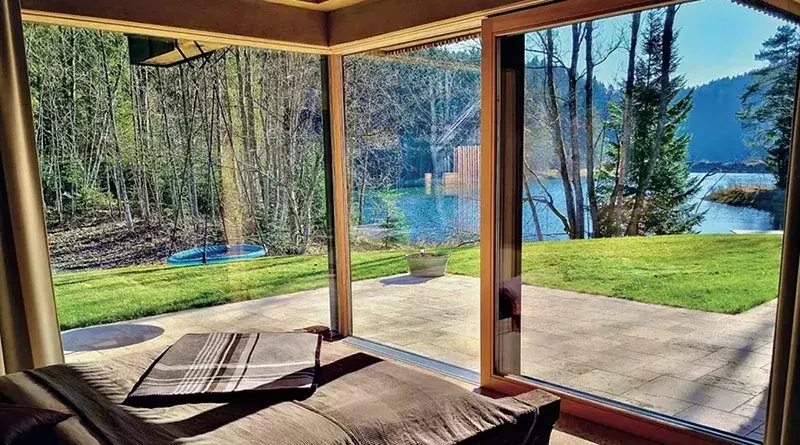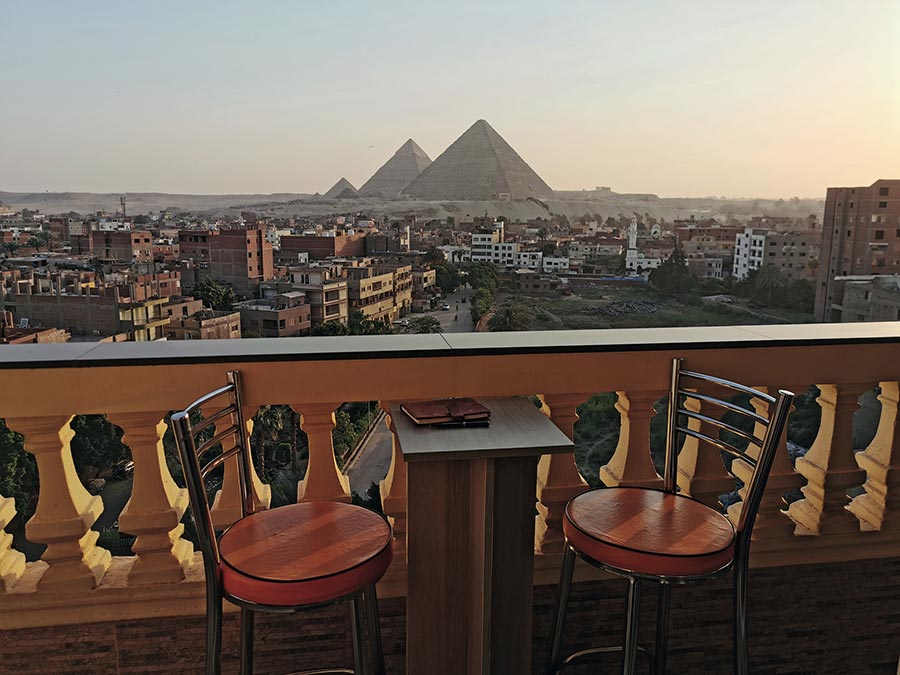
If, according to a common saying, “the eyes are the window to the soul,” then perhaps windows are the eyes of a building. Whether glass, paper, or even a simple opening, windows have been an essential part of human structures since we began making them, and their function goes far beyond form. The year of the coronavirus pandemic has revealed the critical role of windows as they connect the private space of the home with the public space of the city. In celebration of JAPAN HOUSE Los Angeles’ new virtual exhibition in collaboration with Japan’s Window Research Institute, it’s the ideal time to consider the wonder of windows, a marvel of culture and design hidden in plain sight.

Uppsala Sverige, April 5, 11:00 am ©Monica Lindqvist ©View From My Window
In cultures around the world, windows have developed in response to climate, and in tandem with architectural trends and technology, serving functional needs as well as social meanings. Like doors, they have a dual role as a boundary and portal – to keep things out, as well as let things in. But unlike doors, which are either open or closed, a window’s key feature is its multi-functionality and transparency, allowing light, sights, sound, and communication to pass through.
The earliest windows in human dwellings were simply openings to let through air and light; the English word “window” derives from the Old Norse (the ancient language of what is now known as Scandinavia) “vindauga”, which roughly translates to “wind eye”. For centuries, this typically meant the hole in the roof of a hut, or wall openings that could be closed with animal hides, textiles, or wooden shutters. Later, semi-transparent sheets of flattened animal horn or thin-sliced marble were set in wooden or stone frames. Though glass windows first appeared in ancient Rome around 100 AD, their expense and fragility meant they didn’t widely appear in European buildings until the 17th century. By this time, there were already stunning examples of windows as art as well as cutting edge engineering – the famous stained glass Rose Windows of Notre Dame Cathedral in Paris were completed in 1260. As glass-making became industrialized the possibilities for windows multiplied, leading up to the plate-glass floor-to-ceiling windows now common in skyscrapers, or Philip Johnson’s iconic Glass House (1949) which posed the question – what if every wall was also a window? Of course, Japan had answered this question centuries before.
Like his fellow modernist architects in the West, Johnson was heavily influenced by Japanese design philosophy and the modular way windows function in the traditional Japanese house. A building-block of traditional Japanese architecture is the shoji – translucent screens on a wooden frame, which are essentially both doors and “windows” that can be installed in a variety of configurations. While paper windows were common in ancient Japan, sliding shoji screens became prevalent in aristocratic homes and teahouses in the Kamakura period (1123–1333), and later spread to commoner’s homes.
A typical shoji screen is comprised of a wooden or bamboo framework called kōshi, which can support various coverings ranging from washi paper to cloth, wood to glass, or can even remain an open lattice for air flow. Even when covered with paper, shoji allow light to shine through, and with their ability to slide, create a more fluid connection between outside and inside. Many shoji are designed to provide a strategic “picture window” on a specific view of the natural landscape outside, such as the yukimi-shoji or “snow window” for gazing out to a winter view. They’re also crafted for specific effects of light and shadow inside, such as the haiken-mado (“viewing window”) in traditional teahouses that casts indirect light on tea leaves to heighten their color for the delight of observers.
Many contemporary architects around the world continue to draw inspiration from the flexibility of traditional Japanese windows, particularly for the emerging field of “passive design” which seeks to control the climate of a space without high energy usage. Japan’s Window Research Institute believes that the future sustainability of our homes can be improved by considering the construction of architecture that open to the outside, with windows that match each function such as ventilation, lighting and views as well as high insulation.
Even beyond goals of sustainability, the recent pandemic has revealed the importance of windows to the health of people and communities. Throughout 2020, windows have become a crucial way to connect across safe, transparent boundaries that also serve to unite. Architect Hiroshi Hara believes that while windows belong to the individual who owns them, they should be seen as having a communality quality, and in an increasingly divided society windows may be a way to regain that communality. Globally, people stuck at home created spontaneous traditions of opening their windows and balconies to clap for healthcare workers, play music, send paper airplanes, and more. While travel has been largely on hold, the website “Windowswap” became a popular way for people to “virtually” journey to another place, via brief video clips filmed from windows around the world. Similarly, Barbara Duriau, a Belgian graphic designer living in Amsterdam, launched a Facebook group called #ViewFromMyWindow which quickly swelled to 2 million international members with individuals posting snapshots of their window views, sharing a vicarious “peek” into others’ lives and perspectives.
However much we now rely on the “window” of our devices, we have also learned that no digital screen can replicate the beauty and serendipity of a physical window. When we stare through a frame to the world beyond, or open shutters to catch the breeze drifting by, the sense of possibility is endless. This same insight can be found in poetry and art of centuries past. In the late 18th century, the poet Kobayashi Issa wrote in a famous haiku: “A lovely thing to see / through the paper window’s hole, / the Galaxy.” The times remind us of the humble power of our windows to reveal our cities, our selves, and a constantly renewing view on the times we live in.
Related Exhibition
WINDOWOLOGY | New Architectural Views from Japan
Developed prior to the pandemic but extraordinarily pertinent now, Windowology examines the role of windows as cultural objects and the ways in which they frame our vision and give unique perspectives on the world.
- Date
10.24.2020 - Present
- Location
Online
- Fee
Complimentary




